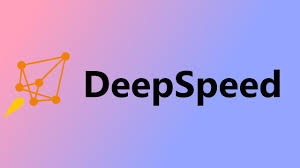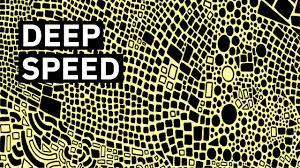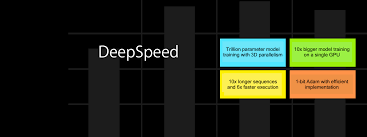
Revolutionizing Deep Learning with DeepSpeed: A Guide to Efficient Training at Scale 2024
The world of deep learning has advanced significantly, with larger and more complex models continually emerging. However, training these large models often comes with high computational costs, requiring significant resources and time. DeepSpeed, developed by Microsoft, has introduced a groundbreaking solution to accelerate training and inference, enabling the development and deployment of massive deep learning models with ease and efficiency.
In this blog post, we’ll explore how DeepSpeed optimizes deep learning models, its key technologies, and how you can integrate it into your workflows for training models at scale.
What is DeepSpeed?

DeepSpeed is an open-source library designed to improve the efficiency of training deep learning models, especially those with massive scale. It is built to make it easier to train large models on a wide variety of hardware setups, from GPUs to CPUs and even across multiple nodes. DeepSpeed’s primary focus is on training deep neural networks (DNNs) at scale, enabling models with trillions of parameters to be trained faster and cheaper.
Key Features of DeepSpeed

- Training at Scale: DeepSpeed allows models to scale to tens of trillions of parameters without needing custom infrastructure. It uses cutting-edge techniques like ZeRO and 3D parallelism to distribute the training load across multiple GPUs or nodes.
- Efficiency: The library optimizes training by reducing memory usage, allowing larger models to fit into the same amount of hardware. It ensures that training large models is cost-effective by improving both throughput and accuracy, and reducing communication overhead.
- Ease of Use: DeepSpeed is designed to be simple to use. A few lines of code changes are required to integrate it with existing frameworks like PyTorch and Hugging Face. It allows data scientists and researchers to achieve scalability without dealing with the complexity of parallelization.
- Accelerated Inference: DeepSpeed doesn’t just optimize training; it also accelerates inference, making model deployment faster and cheaper. This is especially important for production systems where response times and operational costs matter.
DeepSpeed’s Key Technologies

DeepSpeed relies on several key technologies to achieve its impressive performance:
1. ZeRO (Zero Redundancy Optimizer)
- ZeRO is a distributed training technique that eliminates redundant storage of model parameters across GPUs. By partitioning the model’s parameters, gradients, and optimizer states, ZeRO ensures efficient memory usage, allowing larger models to be trained on fewer resources.
- ZeRO Stages: DeepSpeed uses multiple ZeRO stages (ZeRO-1, ZeRO-2, ZeRO-3) to scale model training. Each stage progressively reduces the memory footprint, with ZeRO-3 being the most efficient for extremely large models.
2. 3D Parallelism
- DeepSpeed incorporates 3D parallelism, which combines data parallelism, model parallelism, and pipeline parallelism. This enables highly scalable distributed training, allowing models to be trained efficiently across multiple nodes with a minimal performance hit.
- It also supports ZeRO-Offload, which offloads parts of the model to the CPU, reducing GPU memory usage even further.
3. ZeRO-Infinity
- ZeRO-Infinity takes memory optimization to the next level by enabling training of models that require massive memory. With support for NVMe and CPU memory, ZeRO-Infinity enables the training of models with up to 1 trillion parameters on a single GPU.
4. 1-bit Adam Optimizer
- The 1-bit Adam optimizer significantly reduces communication overhead during training. By compressing gradient updates, DeepSpeed cuts down on communication costs, making it 5x faster compared to traditional Adam optimizers.
5. MoE (Mixture of Experts) Optimizations
- DeepSpeed provides optimizations for MoE models, which are essential for large-scale language models. These models activate only a small subset of “experts” during each forward pass, drastically reducing the computational cost.
Training Large Models Efficiently
One of the standout capabilities of DeepSpeed is its ability to handle extremely large models with billions or even trillions of parameters. Here are some of the largest models trained using DeepSpeed:
- Turing NLG 17B: One of the largest language models by Microsoft.
- GPT-NeoX 175B: A 175 billion parameter model.
- MT-NLG 530B: A 530 billion parameter model, one of the largest language models to date.
DeepSpeed powers these models by using model parallelism, data parallelism, and optimizer offloading to distribute the training load across GPUs efficiently.
Usability: How Easy is it to Integrate DeepSpeed?
Integrating DeepSpeed into existing PyTorch models requires just a few lines of code. Here’s a basic setup to use DeepSpeed with a model:
pythonCopyimport deepspeed
# Initialize the model with DeepSpeed
model_engine, optimizer, _, _ = deepspeed.initialize(args=deepspeed_args,
model=model,
optimizer=optimizer,
training_data=train_data)
# Train with DeepSpeed
for batch in train_loader:
inputs, labels = batch
outputs = model_engine(inputs)
loss = compute_loss(outputs, labels)
model_engine.backward(loss)
model_engine.step()
The integration is so simple that it allows data scientists and engineers to focus on the model and data without worrying about underlying parallelization techniques.
DeepSpeed in Action: Speed and Efficiency
DeepSpeed has proven to be significantly faster than traditional training methods, particularly in the training of transformer-based models. For example:
- BERT Training: With DeepSpeed, training BERT on 256 V100 GPUs took 144 minutes, compared to 236 minutes without DeepSpeed.
- Training on TPU: DeepSpeed outperformed Google’s TPU setup for BERT training, finishing in just 44 minutes.
Additionally, DeepSpeed’s distributed data parallelism scales superlinearly with the number of GPUs, meaning the more GPUs you use, the better the performance.
Inference Acceleration
DeepSpeed also excels at accelerating inference, providing optimizations that allow transformer models to run up to 6x faster and cheaper. This is especially beneficial for large-scale applications, where inference speed is critical for delivering real-time results.
Conclusion: Democratizing AI
DeepSpeed is changing the landscape of deep learning by making it possible to train and deploy models at scale with efficiency. It lowers the barrier to entry for researchers and companies looking to develop state-of-the-art models without requiring vast computational resources. With its robust features like ZeRO, 1-bit Adam, and MoE optimizations, DeepSpeed enables researchers to work with models containing tens of trillions of parameters, pushing the boundaries of AI research and application.
DeepSpeed is an invaluable tool for anyone working with large-scale deep learning models, whether in natural language processing, computer vision, or any other domain. By making AI training faster, more efficient, and more accessible, DeepSpeed is helping to democratize AI and accelerate innovation across the field.